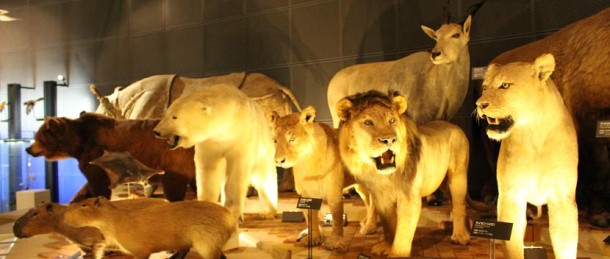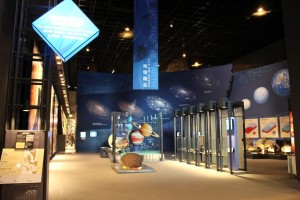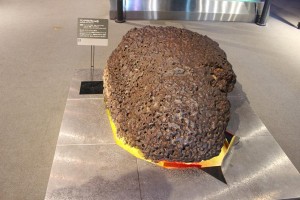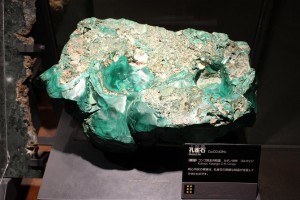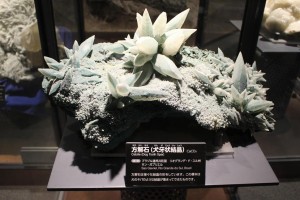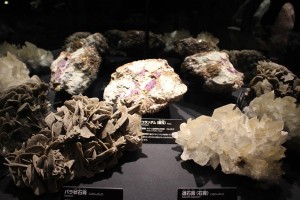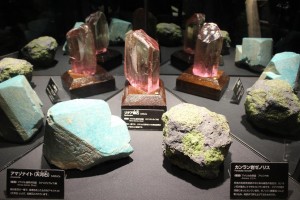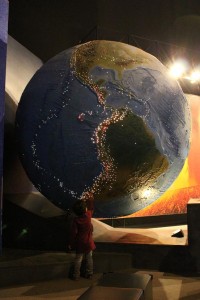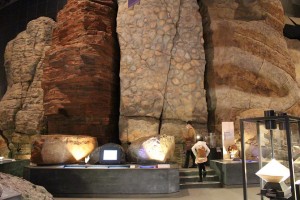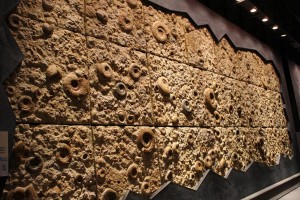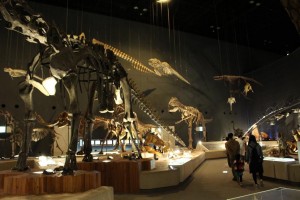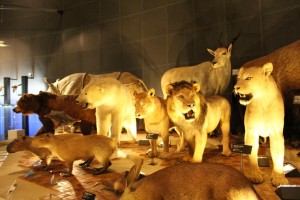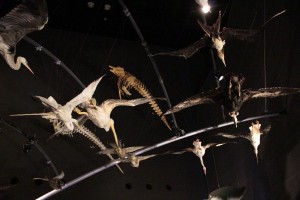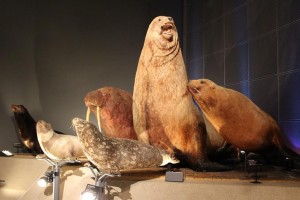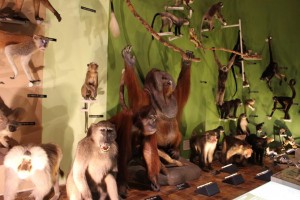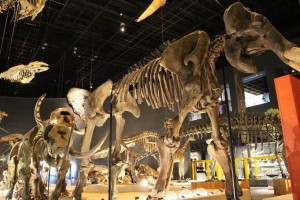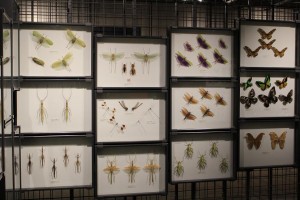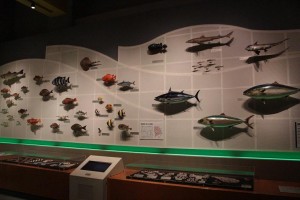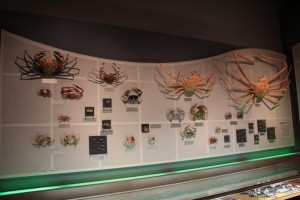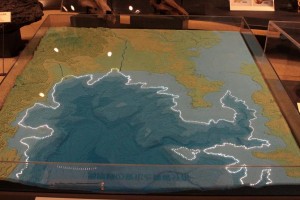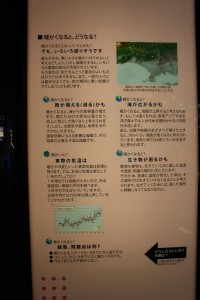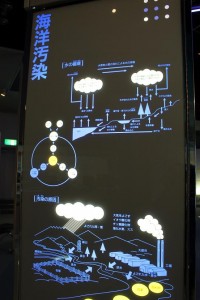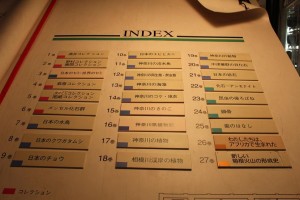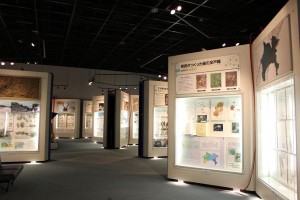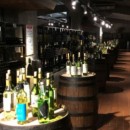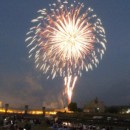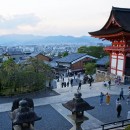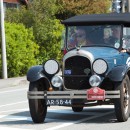Kanagawa Prefectural Museum of Natural History
Kanagawa Prefectural Museum of Natural History is an educational museum with more than 10,000 specimens on display. It has four main areas; Earth zone, Life zone, Kanagawa zone, Humans in Nature zone, and Jumbo Book Exhibition zone. The museum explains in details the history of Earth from its formation to its present day state.
The main exhibition area started with the Earth zone. This zone covered how Earth was formed from cosmic dust, to the formation of ocean, land, and atmosphere. This section placed great emphasis on rocks and minerals.
Here’s the biggest attraction of the Earth zone.
A fragment of the Mundrabilla meteorite. Mundrabilla was one of the largest meteorite ever found, back in 1911 in Australia.
Plenty of pretty minerals to be found here.
A large globe showing the volcanoes and earthquake zones with LED lights.
Four different kinds of cliffs.
Next up was the Life zone. This whole area covered the entire history of life, from the earliest microorganisms to present day life.
Wall of ammonite.
Dinosaur fossils. Take note that the fossils were replicates.
Mammals.
Birds.
Marine animals.
Primates.
Elephants and mammoths.
A whole variety of insects.
The next area was the Kanagawa zone. This area covered the geographical features and life of Kanagawa.
Marine life in Sagami bay.
The shape of the coastline in the distant past.
Last but not least, the Humans in Nature zone. This area featured the impact of human beings on the planet.
Left : Text explanation of effects of global warming.
Right : Pictorial explanation of marine pollution.
At the end of it all, there was the Jumbo Book Exhibition zone. This area featured 3.2 meters tall displays designed to look like books.
The “table of content” of the encyclopedia.
This was what the exhibitions looked like from a distance. Great atmosphere for a museum don’t you think?
That covered the areas that requires ticket admission. There were several free to access areas here as well. There was a library specially for books on natural history. You could even directly ask the scholars stationed in the museum whatever queries you might have.
Then there was the Seisa Museum Theater with free shows. Most of them even had English and Korean subtitles. One could request for the subtitles to display by asking a staff before a show starts.
There were special exhibitions held for only certain periods of time. These changes very often, which gave the museum great revisit value.
That was all for my report. This was a truly top-notched science museum. It had very limited English, but the sheer amount of specimens would keep even non-Japanese entertained. As a science lover, this museum more than quenched my thirst for knowledge; in fact there was so much information that my brain couldn’t digest any more of it about two-third of the way through. I fully intend to visit again, and I highly recommend everyone to too.
By Desheng.
Information
| Name | Kanagawa Prefectural Museum of Natural History |
|---|---|
| Location | 499 Iryuda, Odawara, Kanagawa Prefecture 250-0031 |
| Contact | 0465-21-1515 |
| Opening hours | 9:00~16:30 (last entry at 16:30) |
| Price |
Between 20 and 65 years old (excluding students) : 520 yen Between 15 and 20 years old, or students above high school : 300 yen Above 65 years old or high school students : 100 yen Middle school students or below : free admission | Access | From Hakone-tozan railway “Iriuda” station, walk for 3 minutes. |
| Homepage | nh.kanagawa-museum.jp |
*Please check for the latest information before visiting.
* This article was written by a trainee from overseas. Please note that there might be spelling and grammar mistakes.

